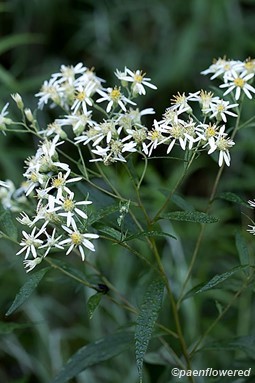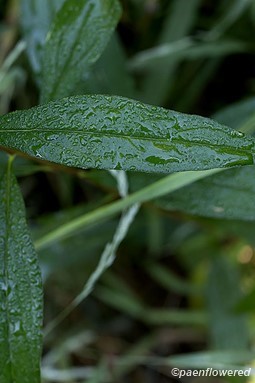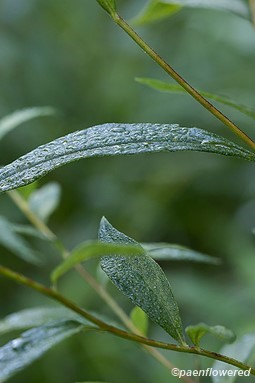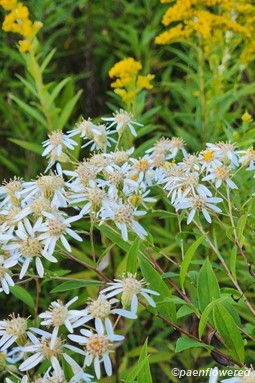Doellingeria umbellata
A white aster among the first asters to bloom
Doellingeria umbellata flat-topped white aster
Add to MyPlants View Locations
Late summer and fall is the time when most aster species are in bloom. Most asters now have new scientific names as a result of fairy recent botanical reworking of their classification involving the structure of their seeds. All are members of the extensive Asteraceae family. This native perennial aster is one of the first asters to bloom in the summer - late July through September. Late summer and fall is the season of the asters, even though a few bloom earlier.
The alternating lance-shaped stem leaves are toothless, but rough margined. They taper at both ends and are up to six inches long. There are no basal leaves. The prominent vein pattern on the leaves is distinctive for this species. The lower leaves may fall off before the flowers appear. The fruit is dry and seed-like with bristles or hairs.
The flat-topped white aster is found in north central and northeastern North America as far south as Iowa and to Georgia in the mountains. It is documented in most counties in Pennsylvania. It grows in moist thickets, wood edges or on the edge of swamps. The plant is eaten by a number of insect or their larvae. Goldfinches and other birds will feed on the seeds. Deer, rabbits, grouse, turkey and domestic livestock can feed on the leaves. It is also called the parasol white-top aster or the tall flat-topped white aster.
Habitat & Range
Frequent in moist woods, flood plains, and wet fields.
Present throughout the state.
| EMP: | FACW |
|---|---|
| NCNE: | FACW |
Phenology
Flowers late July through September.
Plant Codes
S-rank: No rank
G-rank: G5 (Secure)
Doellingeria umbellata flat-topped white aster
Synonyms: Aster umbellatusAdd to MyPlants View Locations







Comments
Have you spotted this plant in your area? We'd love to hear about your experience! Share your comments or questions about the plant below. Comments are moderated before posting.